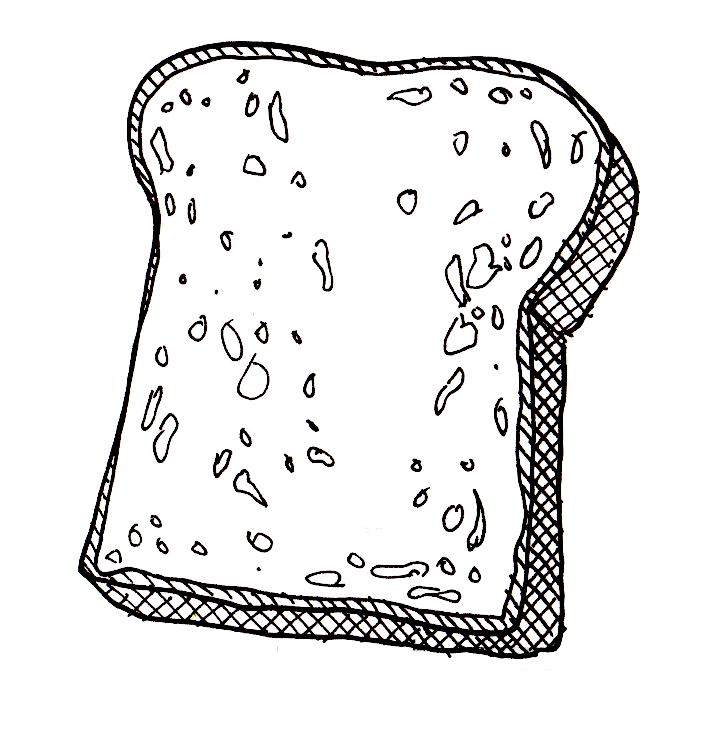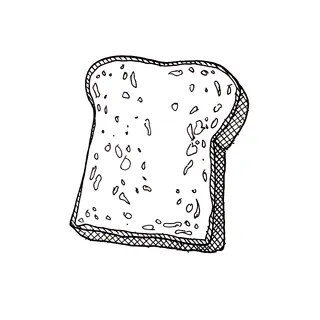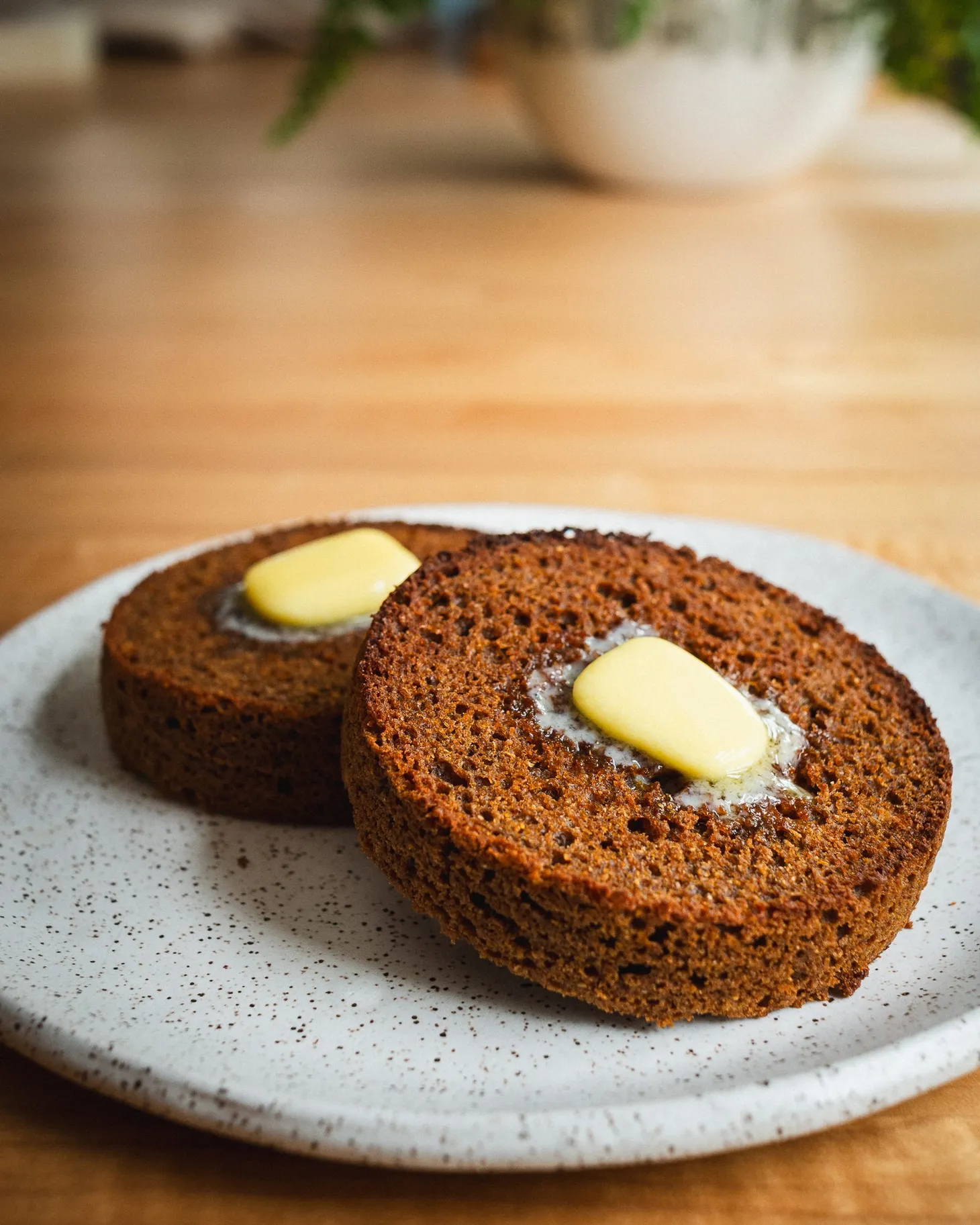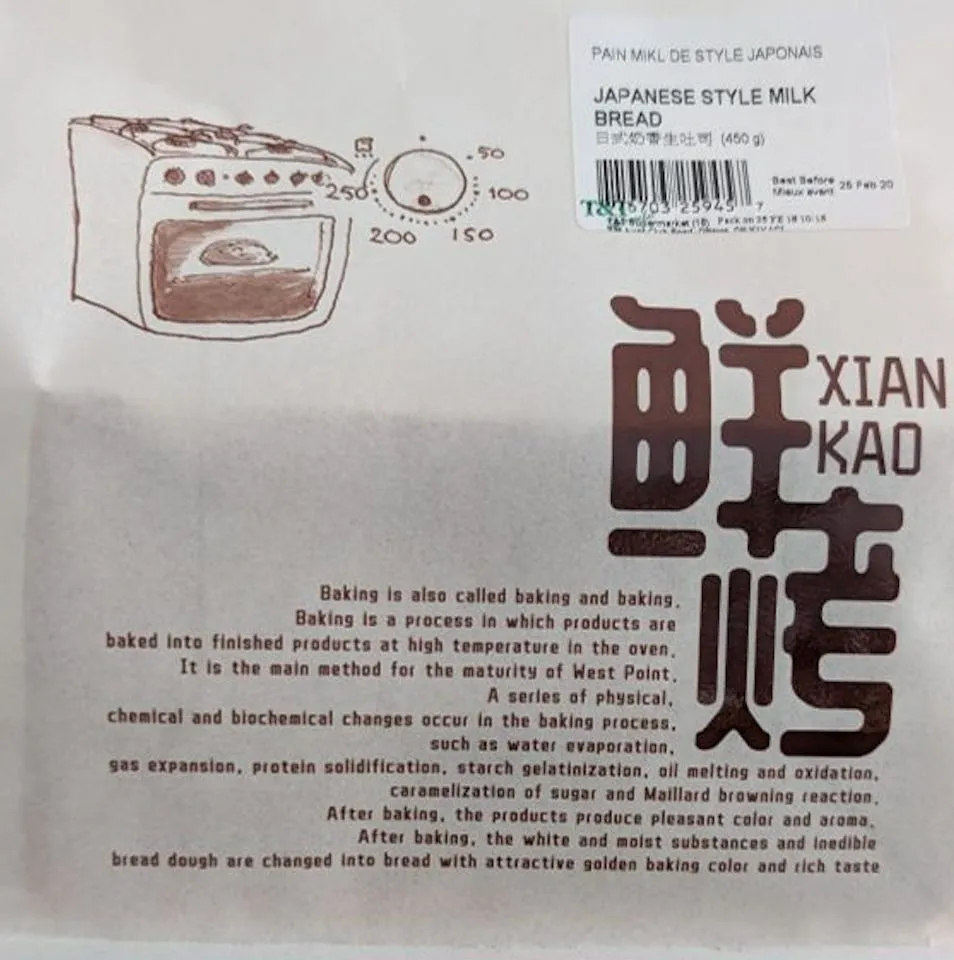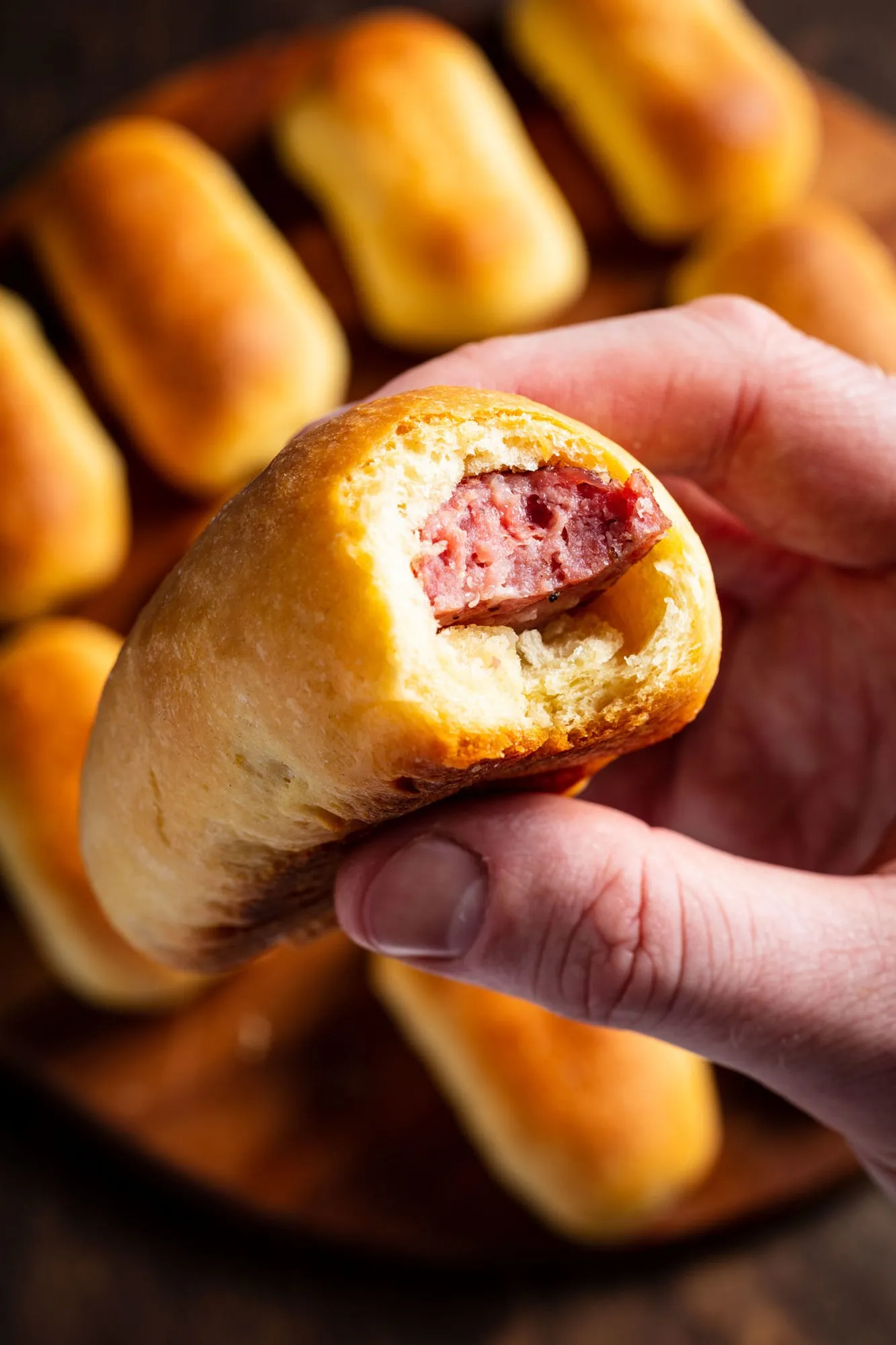That Lone Wolf Bread Lyfe
Rhianna Morris on Debigulating Bread Recipes
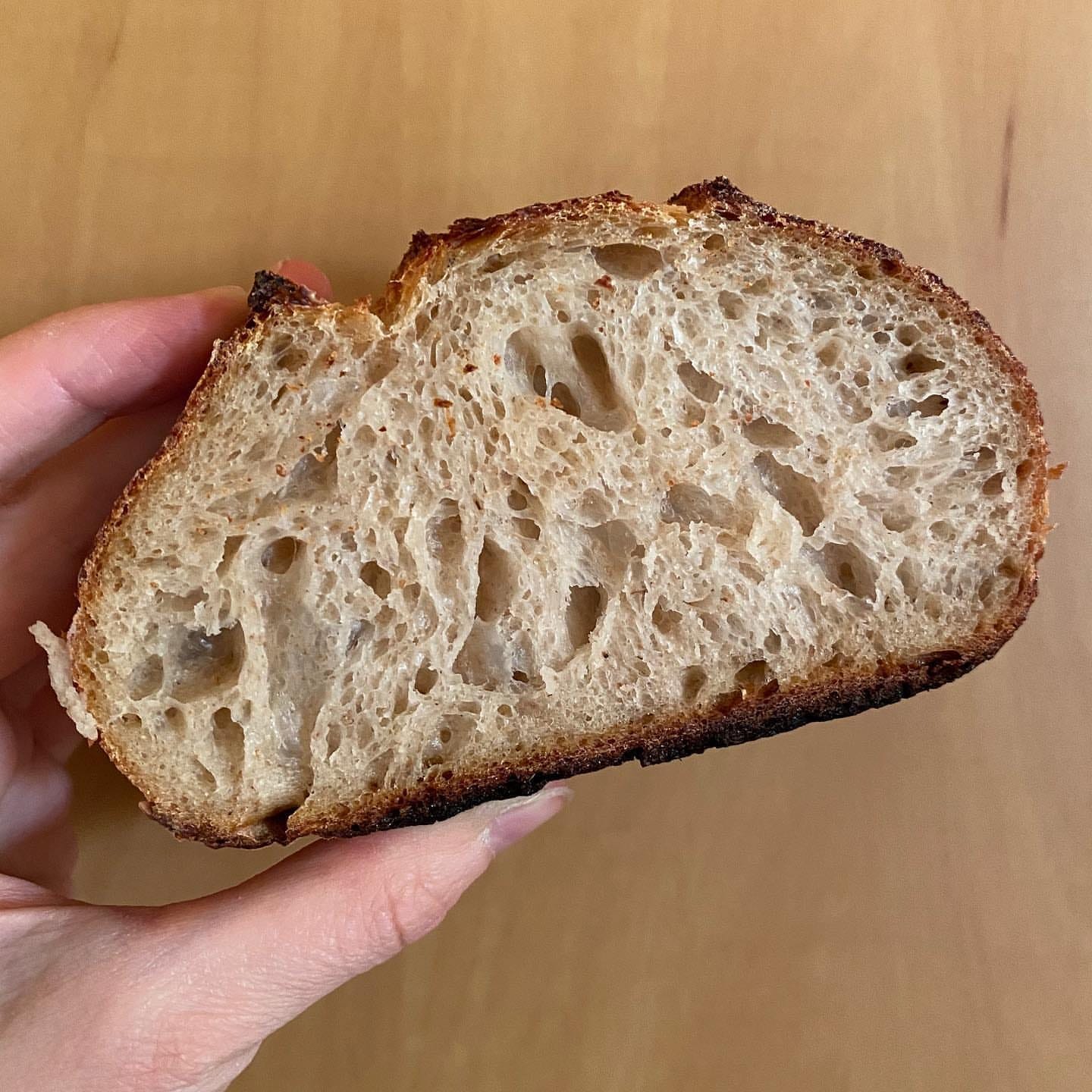
Table of Contents
This week we have a guest post from one of my favorite correspondents, Rhianna Morris. Rhianna has been hanging around this newsletter from nearly its very first days, and she has been spinning off interesting and clever variations of my recipes for nearly as long.
One thing she has done all along is scale down the recipes so that they serve one person, with minimal leftovers. In most cases, reducing bread and flatbread recipes to such diminutive scales require doing more than just math—you also need to sort out what vessel or pan to bake them in, and adjust the method to make sure they bake appropriately under the circumstances.
I asked Rhianna to share what she has learned along the way with all of us here, and I am grateful she obliged.
—Andrew
That Lone Wolf Bread Lyfe
by Rhianna Morris
Like you, I love bread. I’m also pretty good at math, and I like to eat alone—known before 2020, but the past two years wrote it in stone. But I think the true motivating factor behind my breading-for-one quest is my dislike of leftovers. Armchair psychology reasons for this aside, my trials with bébé breads are rooted in wanting something fresh for a single meal without having heels or slices to contend with afterward. Toast is…fine. But I much prefer the crumb and chew of the just-baked. As a wolf pack of one, it can be hard to relish those joys in a timely manner with a standard loaf, so my bakes have almost wholly become bespoke.
How low do you go?
Bébé loaves were not foreign to me because I had eaten so many in restaurants over the years. The only quandary was how much or how little, rather, flour to use. Andrew answered this before I needed to run any real experiments. Around the time my quarantiny starter was finally ready to be used, he posted a photo that included a loaf he made with only 166g of flour.
Soon after I would do the same and then arrive at my breakthrough: total flour amounts in the 140–200g range best suit my bread appetite and size expectations. And when I say total flour, for me this means the flour amount if it’s a yeast-only recipe, or the flour amount + 50% of the levain amount if it’s a sourdough recipe. The baker percentages of numerous recipes have been applied to this general range to yield just-for-one boules, sandwich rolls, flatbreads, and pizzas.
Hands and pans
For a bake where the shape of the loaf initially relies on my hand skills, I work first from my flour amount. I most often use 150g for something I’ll use for a sandwich and plug that into the recipe formula. A small banneton would be nice to hold my shaped dough, but I’ve made do with cloth-lined colanders and loaf pans—the lone wolf bread lyfe means there’s no one beyond your inner critic to say it isn’t working.
Pan bakes often require a little more math. I invested in some six-inch round and square cake pans specifically for focaccia, but I use them just as often now for oversized English muffins.
Before plugging in my desired flour amount, I first do a quick calculation to ensure that it won’t be too much for my small pan. The quickest check is just based on volume. There are numerous sources online that offer baking pan conversion charts based on the number of cups each pan holds. If a focaccia recipe is meant for a pan that holds eight cups and my smaller one holds four cups, I just make sure that the total flour amount of the original recipe is not less than double my desired.
In my quest to prevent senility, however, I more often go back to junior high math with the V = lwh or πr²h formulas. They are especially useful because small or awkward-shaped pans are not always on conversion charts. Once I have the volume of the two pans, I’ll scale down the flour amount accordingly. For example, the pan size I used for a smaller version of Andrew’s Sicilian Slab pizza was roughly 30% the size of the pan he used. So, my flour amount would then be 30% of the original.
Buns in the oven
Beyond the small cake pans I use, I do have a small Dutch oven intended for cooking rice, which I used initially for small boules. But, I’ve found it too small for my needs. A four-quart cooker has worked much better.
When it comes to the elongated sandwich rolls I make (around eight or nine inches long), I place them in a large seven-quart oven.
When I saw that 166g loaf of Andrew’s, I had asked him in the comments if baking time would change, and his reply was not really. For a mini replica of the original, this is true. But a replica is not always my goal, and so it’s with Dutch-oven baking that I have gone more off-script.

The crust development that is aided by a Dutch oven is something I tinker with on small bakes. When I was trying out recipes to use for sandwich rolls, I followed the recipe as-is. Even if the dough was enriched or contained porridge for tenderness, I often found the crust much too chewy for a sandwich—the effort my jaw was putting in to bite down caused the fillings to spill out. My workaround has been to take the lid off the Dutch oven earlier than the recipe outlines. For a recipe where the first 20–25 minutes are lidded, I’m usually lifting at about 12 minutes. That gives enough time for the oven spring magic to occur but without developing as thick of a crust. Shortening the back end helps with this, too. Most of my sandwich loaves are baked for 20-ish minutes instead of 35+.
Success and (in)sanity
I’ve taken the single-portion priority too far at times. Recently I scaled down Andrew’s pumpkin spice bun recipe, and it was so silly to do so.
Although I do have small hands, kneading was quite comical. No complaints on the result, but I’m sure I could have managed a few extra buns to allow for a larger amount of dough. The laughs were nice, but being able to use my stand mixer would have been nicer.
Adventures with a single steamed mantou and mini scallion pancakes have similarly left me feeling like my effort was simply for the sake of saying I could do it. All the kneading and shaping and waiting for that little (mind you, delicious) thing?
Though I feel my shaping always needs help, I have had no actual failures. An oversized soft roll made with enriched dough sunk in the middle as it cooled, but every bake has been edible and used as intended. I always go into things knowing that my adjustments might alter what the final product is supposed to be, so I try to leave my perfectionist tendencies aside to focus on what it’s supposed to be for me: the base of a sandwich, a vehicle for butter, an activity to distract me from the state of the world and feel present in a moment.
No actual failures = overwhelming success.
wordloaf Newsletter
Join the newsletter to receive the latest updates in your inbox.
